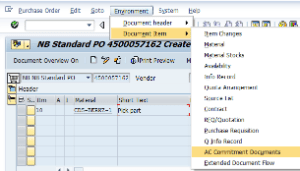
Payroll automation is more accurate than manual payroll, reducing the risk of incorrect payments or deductions that need to be adjusted after the fact. It serves as a favorable choice for businesses of any size, especially those desiring an easy-to-implement and user-friendly payroll solution. Gusto distinguishes itself with its intuitive interface and its focus on the needs of small businesses. It presents an ideal choice for businesses, regardless of their size, seeking a comprehensive solution to address all their HR needs. Rippling is widely acknowledged for its user-friendly nature and its ability to seamlessly integrate with other HR and payroll software. Deciding when to automate your payroll is an important consideration for businesses.
The necessity to transform businesses to keep up with it makes entrepreneurs rethink their methods and adhere to automation. One of the golden rules of automating business processes is to know which tasks and processes are best automated. Growing companies should give top priority to automated payroll solutions due to their valuable benefits demonstrated above. Part of running payroll is writing checks and calculating different types of payment.
Straightforward Payment Calculation
Before all else, it is important to understand the stakeholders’ needs for payroll investment. Tax codes can be updated as laws change, and employers never need to worry about deducting the wrong amounts or missing a tax filing deadline. Get your tax forms and documents (EIN, I-9, W-4) ready, and make sure your employees are aware of the switch to a new system before you roll it out.
Many midsize and enterprise firms use an enterprise resource planning (ERP) system to manage various financial and logistical processes that they can’t do without. Freeing up person-hours to devote to higher-value initiatives and perhaps providing some flexibility to right-size your back-office teams as needed will mean money in your pocket. Treasury comes in through the federal payroll withholding system?
DIY Payroll for 10 Employees
OnPay is acclaimed for its affordability and its commitment to customer satisfaction. It proves to be a suitable option for businesses utilizing QuickBooks, particularly those seeking an affordable and user-friendly payroll solution. QuickBooks Payroll is renowned for its user-friendly interface and its seamless integration with QuickBooks.
Automation: Streamlining payroll, invoicing, inventory management … – SmartCompany
Automation: Streamlining payroll, invoicing, inventory management ….
Posted: Sun, 13 Aug 2023 23:09:18 GMT [source]
Payroll automation[1] refers to the use of computers to produce paychecks and manage benefit payments for a company or community. You might be holding off due to budgetary concerns; after all, many small businesses find themselves strained in the first few years. However, while manual payroll may work if you have a few employees, keeping up with it will become increasingly difficult as your business grows. That’s why it’s beneficial to set up automated payroll before you get to a point where you’re overwhelmed and things start slipping through the cracks.
Saving money– Moreover, the report shows that businesses using a solution where payroll and timekeeping functions are integrated on average beat their revenue targets by 7%. As typically companies need more employees in HR or finance/accounting departments to execute payroll tasks, it is expensive to pay for such large teams. Automation saves money by requiring a smaller team and saving the company from dependency on outsourcing payroll management services. RPA and workflow automation helps reduce human errors to almost non-existent in costly areas such as payroll processing, PTO benefits, and reimbursements.
Top 9 Use Cases and Benefits of Payroll Automation in 2023
You want to make sure they’re paid correctly and on time, and payroll automation does just that. Automated payroll helps ensure that you meet payment deadlines and calculate the correct withholdings for your employees. Altogether, faster and more accurate payroll processing means employees are far more likely to get their paychecks on time, every time. Research from both EY and Deloitte found that the average timescale for ROI was less than a year.
This is especially true for organizations with hundreds, or even thousands, of employees on the payroll. Much like the earlier point on productivity, an RPA bot will complete payroll tasks much faster using fewer resources than the equivalent manual processes. For single tasks, such as salary processing, this can be invaluable. But when RPA is rolled out across several payroll software processes, it can deliver dramatic efficiency improvements for your business. Employee payroll data is confidential information that should be kept safe and protected from unauthorized access.
Automating Payroll: What it Implies and Why Growing Businesses Definitely Need It
Robotic process automation in payroll management guarantees high-level accuracy, boosted security, increased productivity, speedy solutions, and more. It’s clear that there are lots of benefits businesses can enjoy from replacing manual payroll and spreadsheets with payroll automation. The next step, however, is to decide how to proceed in adopting the technology. More importantly, they can help you centralize key data and bring transparency to your startup’s finances.
Human error factor – Implementation of payroll automation minimizes the human error factor from the process. According to the American Payroll Association, almost half of the US employees leave their jobs if they experience problems with their paychecks twice. It demonstrates how costly manual errors resulting from payroll management can be for a business. Payroll management refers to the administrative task of calculating and managing employee salaries, wages, and benefits to ensure timely payments in line with local and international regulations.

Traditionally, this process would take longer as the clerk would have to check the spreadsheets and manually make the necessary calculations. Automation cuts processing time nearly in every phase of Payroll automation the payroll management process. As recent events have shown, businesses need to have flexible access to their data. It is no longer sufficient to tie capabilities to a specific office department.
In addition to processing payroll quickly, automated payroll systems can also provide extra access for employees who need their wages at times outside their normal pay periods. On-demand pay features can provide extra support when unexpected expenses arise without creating additional work for HR and payroll teams. Modern payroll automation software helps alleviate this mountain of responsibility by streamlining payroll processes that otherwise would take hundreds of hours for your staff to manually complete.
With 10 years of experience in employee benefits and payroll administration, Ferguson has written extensively on topics relating to employment and finance. A research writer as well, she has been published in The Sage Encyclopedia and Mission Bell Media. A digital workflow and scheduling tool that allows you to build consolidated views of all your global payroll tasks and events in one place. Automated data validation ensures data goes into the system in the correct format and fits within a specified range. Employees may have questions or concerns about their pay, taxes, benefits, or other payroll-related issues.

Bots compile information throughout the organization for a single source of truth, available to specified employees, executives, and auditors. Paychex Flex, a cloud-based payroll automation software, delivers a broad spectrum of functionalities encompassing time tracking, tax compliance, and reporting. ADP Workforce Now is a cloud-based payroll automation software that provides an extensive array of functionalities, such as time tracking, tax compliance, and reporting. Compliance and regulation adherence are critical aspects of payroll management. Payroll automation software is designed to stay up-to-date with the latest tax laws, regulations, and reporting requirements. This ensures that businesses remain compliant and avoid potential penalties or legal issues arising from non-compliance.
By integrating with your existing HR or HCM system, data is pulled into CloudPay automatically and payslips are delivered to employees via your HR platform. Saving you and your employees the time and hassle of learning additional systems. Payroll is essential to running a business, but it can have a high cost. In fact, according to a Deloitte survey, 27% of HR staff spend most of their time handling payroll and it’s mostly done manually. Wondering if you should automate payroll, and how to make it work for your startup? This payroll automation guide is exactly what you’re looking for.
Likewise, an automated payroll system allows an employer to process its payroll using an online system. CloudPay connects all your employee pay processes – including payroll, payments and on-demand pay – through a unified solution. With so much information required to process payroll mistakes are easily made.
Payroll automation reduces human input by streamlining payroll processing using software. Payroll automation aids in tasks from calculating tax withholdings and filing taxes to creating payroll reports and handling direct deposits. These tools for finance teams can help save both time and money, especially around tax season. Workflow automation is uniquely suited to designing, creating, and deploying automated processes throughout departments and organizations.
AI and Payroll: Analyst Says Change Won’t Replace Professionals – CPAPracticeAdvisor.com
AI and Payroll: Analyst Says Change Won’t Replace Professionals.
Posted: Mon, 07 Aug 2023 07:00:00 GMT [source]
When it comes to accessing spreadsheets and calculating payments for employees, manual data entry can be tiring. Even in businesses with a smaller headcount, payroll calculations can feel complex. This is often due to the varying types of employee paychecks to submit. The simplest benefit is RPA’s reliability in automating payroll software solutions. Due to its relatively simple nature, RPA is unlikely to suffer extended outages, particularly if hosted by a cloud provider with guaranteed uptime. Unlike manual processes, RPA will continue churning away, even if the office is closed or other areas of the business are suffering disruptions.
- Those rules-based, often tedious, and labor-intensive processes are part of every workplace, just like the payroll cycle.
- Tax codes can be updated as laws change, and employers never need to worry about deducting the wrong amounts or missing a tax filing deadline.
- As is usually the case with any business transformation project, there is no one-size-fits-all model when it comes to digitizing payroll.
- Not only will this make things easier for you, but you can also enjoy peace of mind knowing that you’re complying with IRS regulations and tax laws.
In essence, this automation can use an HTTP webhook to send the employee a text message (which is customizable) once their payroll information is changed in the HRIS. Still, any oddball processes that your new solution can’t handle will need to be accounted for some other way. Ask owners or HR managers from non-competitive peer businesses for their honest opinions about which provider you should use. You’ve committed to integrating your future payroll system with your existing ERP.